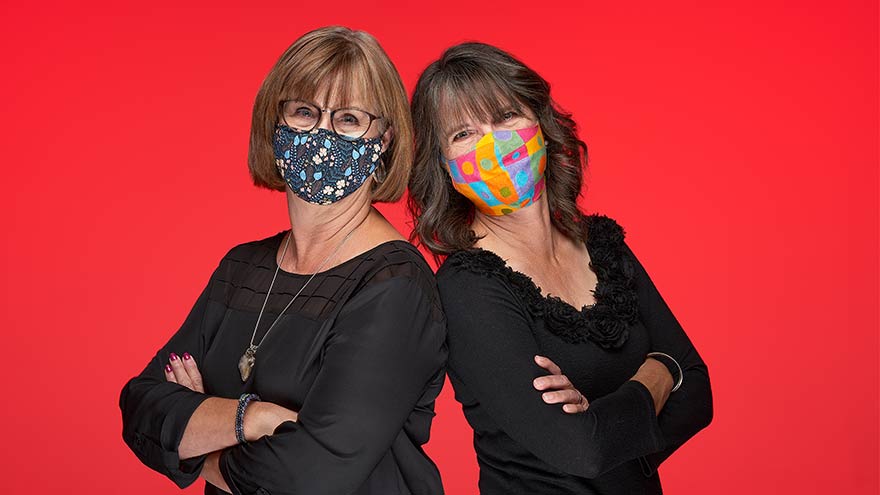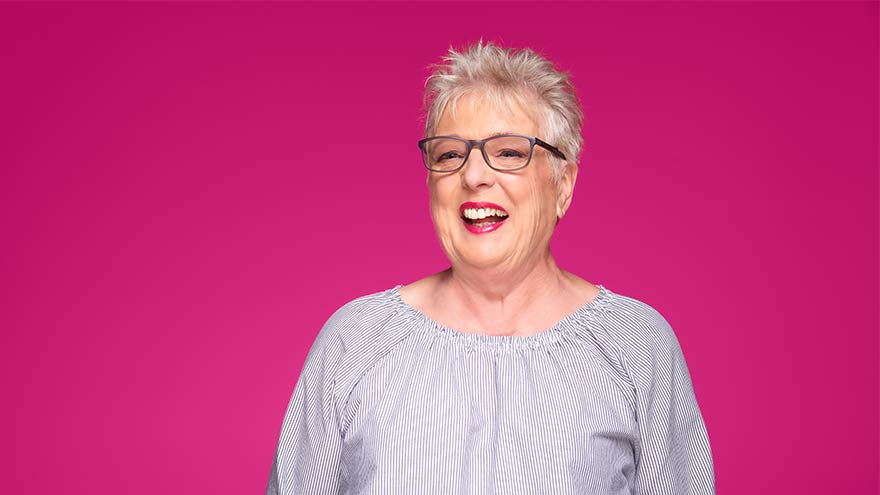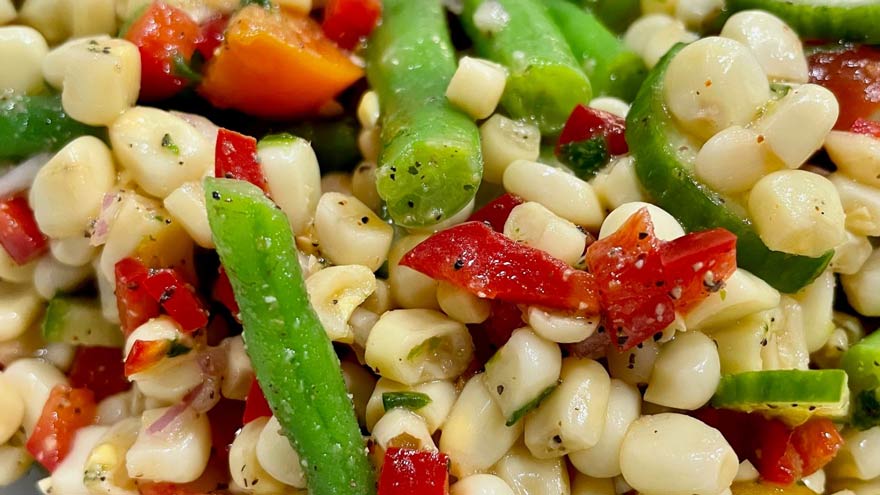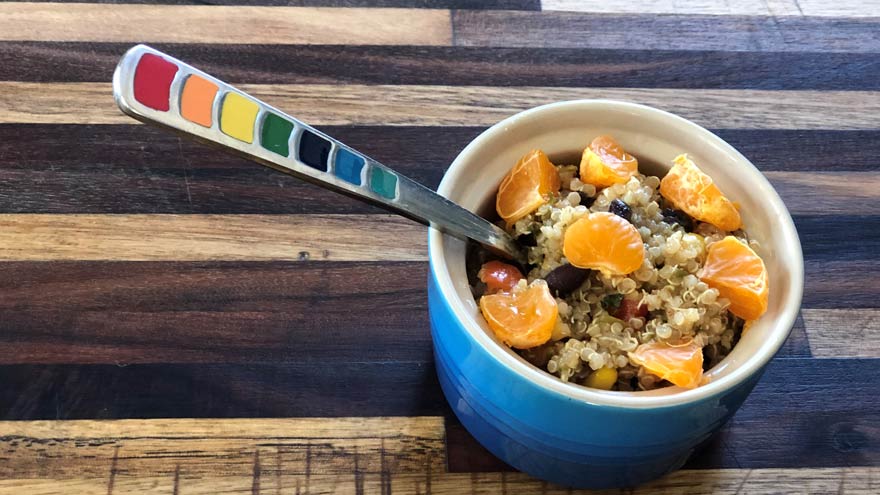Search
-
What Every Woman Needs to Know About Dense Breast Tissue
In honor of International Women’s Day, we’re working to spread the word about taking care of your breast health and encouraging the women in your life to do the same. Heather Reimer is on a mission — a mission to educate women everywhere about breast tissue type. For women with dense breasts, knowing your breast tissue type is absolutely critical, as cancers embedded in dense breast tissue are not always detectable with a mammogram alone. Dense breast tissue requires a breast ultrasound screening to get a complete breast health picture. Whole Breast Ultrasound for Dense Breast Tissue Heather knows this firsthand. She has dense breasts, and in this video she shares her story about finding breast cancer during a breast ultrasound screening — cancer that went undetected with her mammogram screening alone. As a result of that experience, Heather founded Each One. Tell One. — a movement to encourage women to pass along this information to others and to prompt those with dense breast and implants to consult with their doctor to schedule a whole breast ultrasound screening. To schedule a mammogram or a whole breast ultrasound, call 775-982-8100.
Read More About What Every Woman Needs to Know About Dense Breast Tissue
-
The Facts About Menopause and Early Menopause
Menopause is something that every woman experiences at some point in her lifetime. Learn what to expect and how you can help manage the symptoms and health risks. Most women don’t experience menopause until their 50s, but certain factors such as chromosomal abnormalities, glandular problems and chemotherapy can cause early menopause before the age of 40. No matter what your age, it’s a good idea be aware of the risks and treatments available to maintain a comfortable and healthy lifestyle. Health Risks of Menopause Two of the biggest health risks posed to women who have gone through menopause are bone density loss and risk of cardiovascular disease. Bone loss can be treated with bisphosphonate and estrogens. “Calcium with vitamin D and weight bearing exercise will also limit bone loss,” says Vickie Tippett, MD and OB/GYN at Renown Health. For cardiovascular risk, a healthy lifestyle is key. Discontinuing tobacco use, getting regular exercise and maintaining a healthy weight and diet all help reduce a woman’s risk of cardiovascular disease. Managing Discomforts of Menopause One of the most common complaints about menopause is the discomfort of hot flashes. “Hot flashes can be treated with systemic estrogen alone or in combination with progesterone or another agent similar to estrogen,” Dr. Tippett says. “Non-hormonal medications such as SSRIs and antidepressants also work.” Vaginal dryness, another common symptom of menopause, can also be treated with estrogen, estrogen-like compounds and personal lubricants. Pills, patches, creams and many other formulations are available to help alleviate discomfort. Knowing when, why and what to expect when it comes to menopause can help make the transition easier. Learn the facts about menopause in the infographic below.
Read More About The Facts About Menopause and Early Menopause
-
What is a High-Risk Pregnancy?
You can still have a healthy pregnancy and baby if your pregnancy is high-risk. Learn what steps you can take to give your baby the best start possible. A “high-risk” pregnancy is one that threatens the health or life of the mother or her fetus. Women with high-risk pregnancies should receive care health care specialists to ensure the best possible outcomes. Some examples of a high-risk pregnancy include: Maternal age, women 35 and higher or 17 and younger Lifestyle choices, including smoking, drinking alcohol and illegal controlled substances Existing medical history, chronic hypertension, diabetes and breathing issues Multiple gestation, pregnancy with twins or triplets Overweight and underweight Remember: You can still have a healthy pregnancy and baby if your pregnancy is high-risk. Some ways to promote a healthy pregnancy: Schedule an appointment with your OBGYN Eat a balanced diet Avoid substances Prenatal care Healthy weight gain Reduce stress Exercise Pregnancy & Childbirth at Renown | 775-982-KIDS (5437) When you are expecting a new baby, you can depend on Renown Children’s Hospital for all your mom and baby healthcare needs. We can help you find the right doctor and tell you what to expect during your stay. We offer childbirth education classes and tours to help you prepare. Be sure to check out our virtual tours of our Labor Assessment Area.
-
You're Ready to Start a Family! Now What?
Deciding you’re ready to start a family is a big decision for any couple. So once you’ve decided – what are the next steps for both moms and dads-to-be? And what should you know if you’re struggling to conceive? Dr. Myron Bethel, OB/GYN with Renown Women’s Health, offers key insights about fertility. What’s the first thing couples should do when they decide to start a family? For the mom-to-be, it’s important to meet with your obstetrician before you get pregnant. This appointment gives you an opportunity to discuss your family medical history, any past or current health problems, immunization history, medications you’re taking and any issues with previous pregnancies. Your doctor can also provide helpful tips to ensure your body is ready for a healthy pregnancy and help guide you on how to monitor your period, basal resting body temperature and other important factors to help you get pregnant more quickly. How can couples who are trying to get pregnant make sure they’re healthy to conceive? Of course it’s important to maintain a healthy lifestyle all the time, but it’s especially important if you’re trying to get pregnant. There’s no magic pill or single food, but women should start focusing on nutrients they’ll need during pregnancy. Before trying to conceive, start taking folate and folic acid to help prevent birth defects. You can get good sources of these nutrients from cereal, spinach, beans, asparagus, oranges and peanuts. Lifestyle changes can also help improve fertility. For both men and women, extra weight can reduce fertility. Both sexes can increase their chances of conception by not smoking, not drinking alcohol and exercising regularly. And for men specifically, take a daily vitamin containing zinc and selenium to support healthy sperm. What is the average timeline for conception, and what do you suggest for couples who may be struggling to conceive and start a family? First, remember getting pregnant can take longer than you expect. Do not to get stressed out about it or place blame. Seventy percent of couples conceive within six months and 85 percent within one year of trying to get pregnant. To help improve your chances of pregnancy, monitor your ovulation closely. You can do this by tracking your period, watching your body closely and logging symptoms, logging your basal body temperature or using ovulation kits. If you still aren’t sure when you’re ovulating, try to have sex every other day to improve your chances of conception. If you’ve been trying for nine months to a year, you can talk to your OB about options and discuss meeting with a fertility specialist.
-
Why Didn't You Tell Me? 10 Pregnancy Surprises, Revealed
We asked, you answered: Moms and dads who have been there, done that offer up 10 pregnancy surprises. These are the things they wish they knew before, during and after their pregnancy. Check out these real examples of insights that would have proved helpful and enlightening to these parents and parents-to-be. When you’re pregnant or considering becoming pregnant, it seems the unsolicited advice runs rampant. You’ll hear people tell you what kind of Boppy Pillow to buy. You’ll have people tell you that you should “definitely” have a natural birth or a pool birth or a doula or a therapy dog present. And you’ll definitely hear about what kinds of foods to induce labor, what kind of tea to drink to reduce nausea during your pregnancy and what kind of underwear for less “chafing.” But something you might not hear as often: Some of the symptoms and side effects, both before and after giving birth, that were totally unexpected. These are the ultimate pregnancy surprises. So we asked the question of moms and dads who have been there, done that: What do you wish you had known would happen during your pregnancy — you know, during the time you were supposed to be all sweet and beautiful and glowing? Here is Part 1, featuring 10 real-life, crowdsourced pregnancy surprises from parents. And yes, there are multiple parts to this post, because people are passionate about sharing their wisdom! We’ll publish the second part later this month. Pregnancy surprises: What do you wish you had known about pregnancy? “The only symptom I never heard anyone talk about is extra blood flow making me feel all sorts of weird feelings in my head. I feel like I’m in a dream half the time. I looked it up online when it started happening, and tons of women have the same symptom.” — Anna K. “For me it was an after-birth surprise. I had no clue your tummy doesn’t just spring back to where it was pre-pregnancy. It was a rude awakening in the hospital when I had to have my husband go home and get a pair of maternity sweatpants to get dressed to go home in. I’d hoped to dress in my old cute jeans…. nope!” — Suzanne M. “I didn’t know that while you’re pregnant, friends and strangers would tell you their nightmare delivery stories. Oh — and that complete strangers will, uninvited, touch your baby bump. I didn’t know that you’re in the safety zone while pregnant and that men and women openly adore you. I didn’t know that besides the mother, the nurses do most of the work. I didn’t know that even though they’ve obviously seen hundreds of deliveries, nurses and doctors cry too once your baby is out. I didn’t know even though I thought they must be crazy to send a tiny human home with me, that you instinctively know how to parent. I didn’t know what it meant to love something more than myself and how that changes everything.” — Cathy B. “I had no idea the weird things that it does to hair. My bangs stuck straight out for months, and I just had to go with it. There wasn’t enough product that would make them lie down.” — Heidi P. “That you may not go home with your child if there are any complications. That was a sad day. But 22 years later, we are blessed, because everything turned out fine.” — Kristine F. “I didn’t know people would opine out loud to you, that you must not have purposely gotten pregnant with Baby #2 or 3, etc., implying you failed basic high school biology and that you should have known better than to have more than one kid.” — Jessica L. “I didn’t know that near the pregnancy’s end, as the hips widen, that those bones could begin to separate. I was sore and achy. And I wish I’d slowed down and rested more in the last few weeks.” — April C. “I had heard about food cravings, but no one told me food aversions were also a thing. I bought a whole load of groceries for the week, and by the time I got home, I suddenly couldn’t even look at the ground turkey (that’s not an exaggeration), let alone cook it and eat it. I didn’t throw up necessarily, but my body told me to avoid most meats and vegetables. I pretty much lived on plain bagels and cereal for half my pregnancy.” — Danielle S. “Morning sickness is SO not just in the morning! All-the-time sickness is what I experienced. And why didn’t anyone warn me about butthole pain during and after birth?” — Stephanie C. “The juiciness. Every possible secretion was in hyper drive.” — Jane F. Giving Birth at Renown At Renown Regional Medical Center we have the skill, expertise and technology — along with a friendly environment — to make your experience a memorable one. Pre-register for childbirth, take virtual tours of our rooms and facilities, and learn more about our labor and delivery offerings at the link below. Explore Our Services
Read More About Why Didn't You Tell Me? 10 Pregnancy Surprises, Revealed
-
Cervical Cancer Screenings Can Reduce Risk of Cancer
According to the American Cancer Society, approximately 14,100 new cases of invasive cervical cancer will be diagnosed, and 4,280 women will die from cervical cancer. However, cervical cancer is preventable with regular screening tests and the HPV vaccine. It’s important to note that medical advances have allowed progress in diagnosing and treating cervical cancer. While it used to be one of the most common causes of cancer death for American women, the incidence of death has significantly declined. What to Know About the HPV Vaccine HPV vaccination is the best way to prevent cervical cancer and is recommended for all youth starting as early as age 9, or for teens and adults up to age 45 who didn’t start or finish the series. In Nevada, only 50.1% of teens ages 13-17 have been vaccinated for HPV. There are 13 types of HPV, and the vaccine Gardasil 9 protects against 9 of those HPV strains, greatly reducing the incidence of cervical cancer among vaccinated individuals. What to Know About Cervical Cancer Screenings The CDC says the most important thing you can do to help prevent cervical cancer is to have regular screening tests starting at age 21. And there are two common tests that can detect early stages of cervical cancer (or precancer) and improve health outcomes. The pap test (or pap smear). This screening looks for precancers. Women should begin getting pap smears when they’re 21. The human papillomavirus (HPV) test looks for the virus that can cause these cell changes. Cervical Cancer Screening Schedule The American Cancer Society offers the following guidelines for screenings: All women should begin cervical cancer screening at 21. Women between 21 and 29 should have a pap test every three years. Beginning at 30, the preferred way to screen is with a pap test combined with an HPV test every five years. This is called co-testing and should continue until age 65. A pap test (or pap smear) is performed during a regular screening appointment to look for precancers, cell changes on the cervix that might become cervical cancer if they are not evaluated or appropriately treated. Typically outpatient procedures can reduce the risk of long-term health impacts that prevent pre-cancerous cells from becoming cancer cells. Women over 65 who have had regular screenings in the previous ten years should stop cervical cancer screening as long as they haven’t had any severe precancers found in the last 20 years. How to Get Screened Request an appointment with your primary care physician or OBGYN to schedule a screening.
Read More About Cervical Cancer Screenings Can Reduce Risk of Cancer
-
Get Ready for Baby with Childbirth Classes
By taking our pregnancy and birth class, you will gain the tools necessary to have a safe and empowering birth experience for both you and your baby. Chris Marlo, Childbirth Educator at Renown Health explains why birth classes are important. For questions regarding classes or tours, contact Chris Marlo: chris.marlo@renown.org 775-982-4352 What is a Certified Childbirth Educator/Doula? If you are expecting a baby, Renown has a wide variety of classes to help prepare you for birth. Classes are taught by certified childbirth educators and doulas. A certified childbirth educator is a trusted resource who has a passion for educating expecting parents about childbirth, and will provide you with non-biased, evidence-based information. A doula is a professional labor assistant who provides physical and emotional support during pregnancy, childbirth and postpartum. As you prepare for birth, our certified educators will guide you each step of the way and ensure you receive the quality care you deserve. Why Should I Take Pregnancy and Birth Classes? For expecting parents, taking a childbirth education course is an important step in preparing for their new arrival. We cover topics such as labor and delivery, postpartum care, breastfeeding, nutrition, pain management techniques, and more. Our experienced instructors will provide you with the information you need to make informed decisions during your pregnancy and childbirth. With our classes, you can be sure that you have all the knowledge necessary to have a positive experience before, during, and after your baby’s arrival. Our classes will help ease your fears as we practice breathing, relaxation and the many tools you can utilize for birth. At Renown we understand that there is no right way to give birth, and our educators will offer a supportive environment where questions are encouraged, and everyone is respected. Childbirth Class Options: Baby and Family Suites Tour & Virtual Tour Breastfeeding Basics and Beyond Class Breathing & Relaxation Techniques for Birth Pregnancy and Birth – 5 & 7 Week Series Pregnancy and Birth Class Additional Resources: Baby Safe Class Babysitter Class Grandparents Virtual Class Infant CPR & Choking Class Newborn Care Nurturing Your Newborn Preparing for Postpartum Virtual Class
-
Building a Better Birth Team
Giving birth expends as much energy as running a marathon. And just like you would only run a marathon with training beforehand, there are exercises you can do to prepare for birth. But instead of a coach, you'll have your birth team. Your birth team exists to help you navigate pregnancy and labor and support your choices. Let's say you've never put together a birth team before and are wondering where to start. Today we'll go over the three main positions to fill for your birth team's starting lineup. Birthing Person The birthing person is the leader of the team. After all, you can't have a birth team without someone giving birth. This person could be the baby's mother, gestational surrogate, birth parent before adoption, a transgender father or a non-binary parent. If you are not the birthing person, don't presume to know what the ideal labor and birth circumstances should be. And if you are the birthing person, don't allow anyone else to tell you what you want. This is your body and your birth; you are the boss in the birth room. Doula No birth team is complete without a doula, and although doulas have increased in popularity lately, many people still don't know what a doula is. Simply put, a doula is a birth professional – not a medical provider – who offers emotional, physical and informational support during pregnancy, labor and beyond. Most doulas' services include at least one prenatal visit and one postpartum visit, as well as continuous care throughout active labor. Some doulas provide more than one prenatal/postpartum visit, so be sure to ask what is included in their fee. Even if you have a partner who will support you during labor, studies have shown that a doula can significantly increase your likelihood of a positive birth outcome. Even the most supportive partner needs to rest, and a doula can ensure that you still get the care you need while your partner gets a break. Midwife or Obstetrician Finally, you'll want to choose the medical professional who will attend your birth. Many folks choose to give birth with the OB/GYN who does their annual check-ups, but there are many reasons someone might choose a different provider for their birth. The first step to finding the best attending provider for your birth is to decide which model of care aligns closest to your values and goals: the Midwifery Model of Care or the Medical Model of Care. .tg {border-collapse:collapse;border-spacing:0;} .tg td{border-color:black;border-style:solid;border-width:1px;font-family:Arial, sans-serif;font-size:14px; overflow:hidden;padding:10px 5px;word-break:normal;} .tg th{border-color:black;border-style:solid;border-width:1px;font-family:Arial, sans-serif;font-size:14px; font-weight:normal;overflow:hidden;padding:10px 5px;word-break:normal;} .tg .tg-gqvw{background-color:#ffffff;color:#56266d;font-family:Arial, Helvetica, sans-serif !important;font-weight:bold; text-align:left;vertical-align:top} .tg .tg-8vim{background-color:#ffffff;color:#56266d;font-family:Arial, Helvetica, sans-serif !important;font-size:18px; font-weight:bold;text-align:left;vertical-align:top} .tg .tg-qm8j{background-color:#ffffff;color:#56266d;font-family:Arial, Helvetica, sans-serif !important;text-align:left; vertical-align:top} .tg {border-collapse:collapse;border-spacing:0;} .tg td{border-color:black;border-style:solid;border-width:1px;font-family:Arial, sans-serif;font-size:14px; overflow:hidden;padding:10px 5px;word-break:normal;} .tg th{border-color:black;border-style:solid;border-width:1px;font-family:Arial, sans-serif;font-size:14px; font-weight:normal;overflow:hidden;padding:10px 5px;word-break:normal;} .tg .tg-gqvw{background-color:#ffffff;color:#56266d;font-family:Arial, Helvetica, sans-serif !important;font-weight:bold; text-align:left;vertical-align:top} .tg .tg-8vim{background-color:#ffffff;color:#56266d;font-family:Arial, Helvetica, sans-serif !important;font-size:18px; font-weight:bold;text-align:left;vertical-align:top} .tg .tg-2rvk{background-color:#ffffff;color:#000000;font-family:Arial, Helvetica, sans-serif !important;text-align:left; vertical-align:top} Midwifery Model of Care Medical Model of Care Philosophy Birth is physiological. Birth is potentially pathological. Interventions Medical interventions can cause more complications, and therefore are only used as needed. Medical interventions should be used, even in non-emergency situations and sometimes as preventative measures. Decisions Birthing person is the key decision maker. Medical professional is the key decision maker. Provider’s Role Providers monitor labor and will intervene or transfer to hospital if needed. Providers assess and control the birthing process.
-
Pandemic Pals and Sterling Silver Club Members
A Friendship Gone Viral When a friendship is strong enough, it can survive just about anything – even a pandemic! Sterling Silver Club members and longtime friends, Marlene and Kim, are living and thriving proof of that. Career & Community Cohorts With successful careers in the Reno area and a common passion for community involvement, it’s no surprise the women knew of each other even before their friendship developed. The first time they actually worked together was in 2001 at TMWA (Truckee Meadows Water Authority), where Marlene’s company was brought on board to steer communications and Kim was heading up the then-new utility’s customer relations department. TMWA was where these colleagues became cohorts who have since become the best of friends. Now retired, Kim’s favorite job these days is being a doting “Noni” to her two granddaughters who live nearby and who she keeps up with by staying active. Kim enjoys practicing yoga and loves to spend time walking and hiking in the great outdoors – with two enthusiastic dogs that are always ready to join her. Marlene is still working and running her nearly 40-year-old public engagement and outreach company, GoodStanding. Her “fun and interesting” projects help to build community engagement for her clients and often focus on water resource management and conservation. The Rotary Club of Reno, known as the “downtown club,” is also an important part of both women’s lives. Marlene was just the third woman to join the historically male organization in 1991 and made it her mission to recruit and sponsor female members – like Kim. Today, women make up nearly half of the membership and Marlene and Kim are both heavily involved in the club and its initiatives, including its scholarship program and community beautification projects along Riverside Drive. A Friendly Q & A To learn more about the friends and maintaining friendships in these socially distanced times, we asked them some questions. What drew you to each other as friends? Kim: Marlene’s honesty, integrity and ethics. Marlene always does what is best for her clients, no matter what. Marlene: Kim and I communicate very well. It’s hard to explain, but sometimes we are both way ahead of our words. How would you describe each other in a single word? Marlene: Focused. Don’t put anything in front of Kim that you don’t want done, and done expertly. Also, helper. She thrives on helping people and working through their problems. Kim: Creative! Marlene came up with many unique ideas to promote and publicize TMWA. And her house the most cozy spaces to sit and visit. Do you have a favorite “That’s so her” moment to share? Kim: Burning Man! Marlene had friends with a camp at Burning Man and she invited me to join them for three days a number of years ago. We rode our bikes, admired the art and did our best to sleep through the techno music that played through the night. It was an amazing time. Marlene: Kim’s involvement in Rotary’s Achievement Beyond Obstacles (a support and scholarship program for deserving local high school students). She has a heart for kids facing challenges, she is a great leader and she loves to help and make a difference. How has COVID-19 affected your friendship, how have things changed and how have things stayed the same? Kim: We don’t see each other in person quite as much. However, Marlene has made sure that many of our girlfriends are able to stay in touch. Marlene: I don’t take for granted we are going to see each other, so we plan it. I am the instigator of walks, socially distanced get-togethers in our green space and Zoom meetings. This new normal has also given me permission to stay home and work. Now, it’s OK to do some gardening or take a walk in the middle of the day. I suppose that’s one pleasant side effect of COVID-19. Why did you become members of the Sterling Silver Club and why would you encourage others to join? Kim: So many friends and family members had nothing but good things to say about Renown that I decided to switch providers. I also really liked what Renown was doing with the Healthy Nevada Project. So, when I saw the Sterling Silver Club, it seemed to me to be just another extension of all the good things Renown has to offer! Marlene: This Club sounded interesting because it would allow me to focus more on my health with like-minded people in my age group. And, I’m with Kim, Healthy Nevada Project is very intriguing for how it could potentially improve health care for all of us. What is the secret to a lasting friendship? Kim: Have patience. Don’t take things personally. Be flexible. And just enjoy one another’s company. Marlene: Respect and grace, equally. We are not perfect and we are all different. So give your friends respect always, grace when they flub up and support when they need help. Thanks to Kim and Marlene for being such generous collaborators and ambassadors of the Sterling Silver Club. Friend Fun Fact: Kim helped Marlene find her new house a few years ago – and more recently, a new dog! Marlene and “Levi” have been inseparable ever since.
Read More About Pandemic Pals and Sterling Silver Club Members
-
Meet Ann Sterling Silver Club Member
If Sterling Silver Club member Ann had an official motto, it would be, “I love to learn new things.” Ann has been a Reno resident for about 25 years after making her way to the Silver State from Arizona and before that, her birth state of Indiana. All along the way, she’s been growing, exploring and learning. Meet Ann From her days as a Girl Scout to her cherished roles as mother and grandmother and her time spent working for the federal government, Ann has enjoyed the adventures she’s had, the people she’s met and the learning opportunities that continue to be an important part of her life’s journey. “Learning never has to end,” Ann says wisely. Today, Ann lives a life full of learning — and giving. She is a member of the Osher Lifelong Learning Institute (OLLI) at UNR, which offers classes and events for people who are 50 and older. She has also been a foster grandparent for Seniors in Service and has tutored troubled teens at the Jan Evans Juvenile Detention Center and helped out at Title 1 schools. Volunteer Extraordinaire Her volunteer résumé continues with work for the Reno Police Department’s SAVE program through Retired Senior Volunteer Program (RSVP) for Sanford Center for Aging and time spent with VISTA for AmeriCorps, helping victims of domestic violence and refugees. And with her recent appearance in Ky’s Kab, a segment of Aging & Awesome — the popular 55+ show airing Saturdays at 7 p.m. on local CBS affiliate, KTVN Channel 2 — she’s a bit of a celebrity to boot! Through all of her experiences, Ann has learned something about herself and others. She looks forward to the new memories and friendships her latest membership to the Sterling Silver Club will bring. “I love being a member of the Sterling Silver Club because it’s another opportunity for me to grow, have fun, learn and socialize,” she says. And everyone at Renown is thrilled to help her do those things — and live a happy, healthy life. Please join us in welcoming Ann, one of our first members of the Sterling Silver Club. Today we have more than 2,800 members and we’re happy to be featuring members and getting to know you all along the way!
-
Summer Side Dish Medley
Sweet corn and tomatoes, while delicious on their own, also enhance the flavor of crunchy cucumber and tender green beans. This plant-based salad recipe is a satisfying and cool side dish for the protein of your choice, such as chicken or salmon. Mix up this medley when you want to enjoy your seasonal summer corn and tomatoes.
-
Citrus Black Bean Quinoa Salad
Looking for the most delicious plant-based, protein-rich salad to add to your recipe repertoire? Look no further. We asked our registered dietitian, Caitlin Bus, with Renown Healthy Heart Program for the one recipe that all her class participants rave about. Caitlin’s popular recipe offers a bounty of fiber and protein. This dish is a showstopper because quinoa is a healthy grain. A cup contains 8 grams of protein and 5 grams of fiber, compared to 4 grams of protein and only 1 gram of fiber in a cup of white rice. With the perfect amount of citrus flavor combined with corn, bell pepper, and beans this dietitian approved quinoa salad will be a staple for all occasions. Enjoy!










